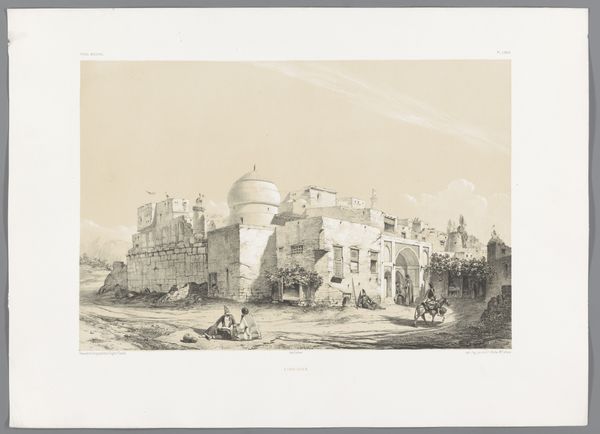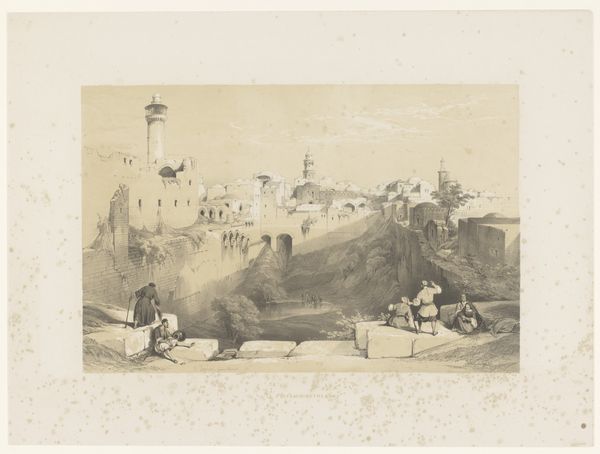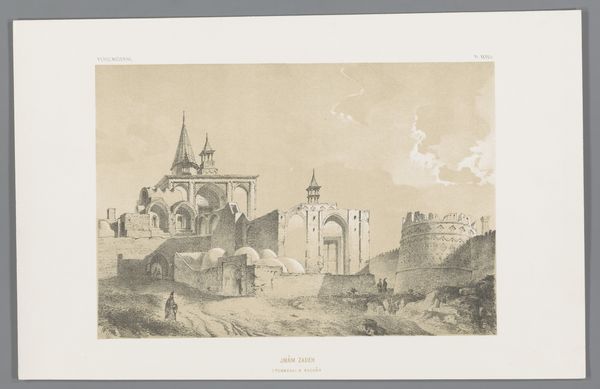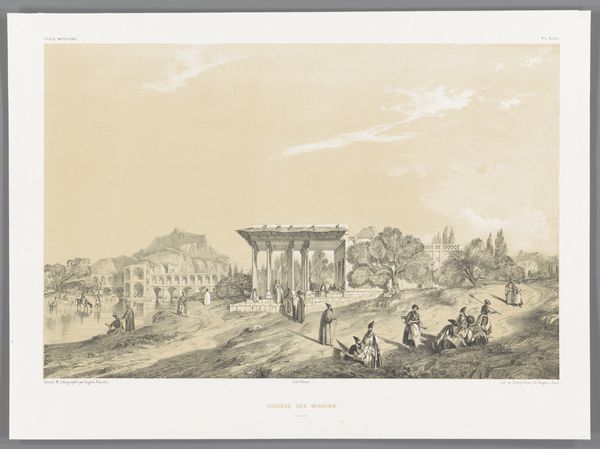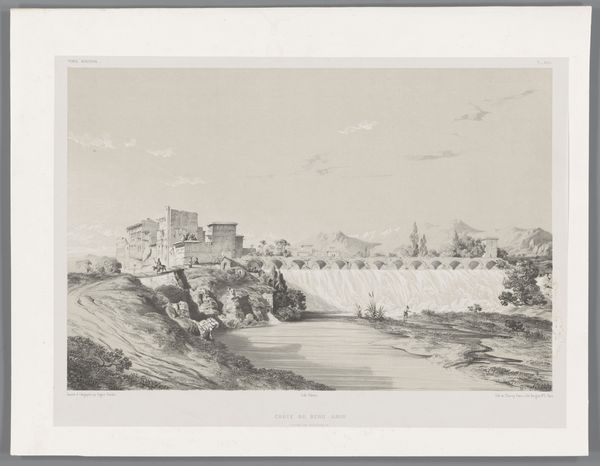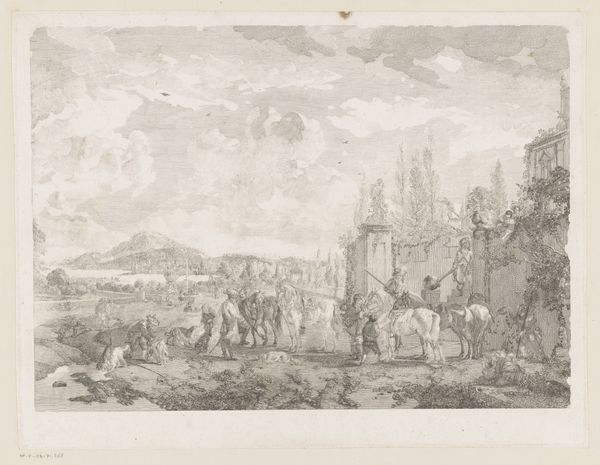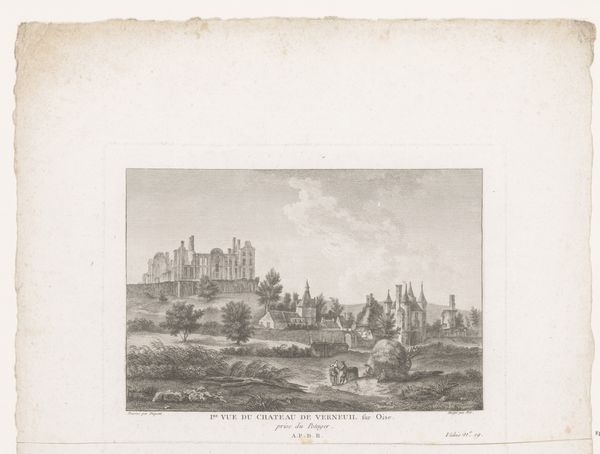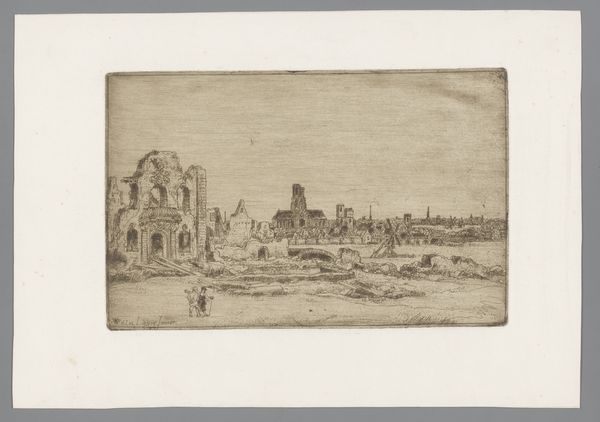
lithograph, print, etching, architecture
#
lithograph
# print
#
etching
#
landscape
#
orientalism
#
watercolour illustration
#
watercolor
#
architecture
#
realism
Dimensions: height 410 mm, width 523 mm
Copyright: Rijks Museum: Open Domain
Curator: Eugène Flandin's "Ruïne van de tempel van Anahita in Kangavar," created between 1843 and 1854, is a captivating piece held here at the Rijksmuseum. This print combines the techniques of lithography and etching to depict a ruin in a stark but engaging manner. Editor: The overwhelming sense is of a fallen grandeur, wouldn’t you say? The neutral tones lend an air of solemnity, like a memory fading in the sunlight. Curator: Indeed. Flandin’s work belongs to the Orientalist movement, reflecting a 19th-century European fascination with the Middle East and its antiquities. The depiction of the temple's ruins also served as a record of a place undergoing constant political change. Editor: I find the ruined temple itself so fascinating. The recurring motif of broken columns, of the fragmented wall, points toward a disruption in a once cohesive spiritual and cultural structure. Curator: Precisely. The figures are dwarfed by the ruins, underscoring a feeling of time's relentless march and civilization’s decline. Note how the artist positions local inhabitants amongst the stones. They seem both a part of and apart from the scene, adding another layer of reflection on cultural continuity. Editor: And observe that even amidst the ruin, the architecture maintains a symbolic power. The archways evoke both gateways to the past, but perhaps pathways into future restoration as well. Curator: Flandin offers viewers an entryway into a complex narrative where politics, architecture, and personal experiences intersect. His artistic interpretations helped shape popular perceptions of the East within a European context. Editor: Examining art like Flandin’s allows us to delve deep into our own perspectives about cultural preservation. These symbols outlive those who created them. Curator: Looking at it, I’m again reminded how art becomes both a document of record and a shaper of narratives around cultural heritage. Editor: An artist’s representation certainly inspires reflection, not only on art but history and cultural narratives themselves.
Comments
No comments
Be the first to comment and join the conversation on the ultimate creative platform.
